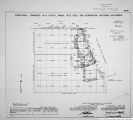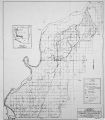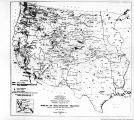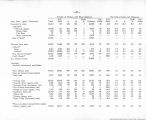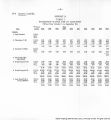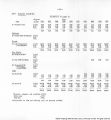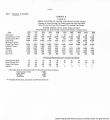| OCR Text |
Show BUDGET BUREAU CIRCULAR A-4 7 AND POWER PARTNERSHIP 49 (i) "Operation and maintenance costs" means those expenditures for materials and supplies, labor, necessary services, equipment and operating facility use, and an appropriate portion of engineering, supervision and general expenses of the agency which are needed to operate a project once constructed and to make repairs, minor additions and replacements, and otherwise to maintain the project in sound operating condition for a maximum economic life. This includes any expenditures of the project, other than capital expenditures, for protection of public health, for preventing loss of or damages to recreation and fish and wildlife resources, and scenic, archeological and historical values; and any expenditures of the project, other than capital expenditures, for the replacement of recreation and fish and wildlife resources damaged or destroyed by the project. (j) "Net revenues" means the difference between the total revenues of the program or project or separable purpose thereof and the properly allocable financial costs of such program, project, or purpose. (k) "Reclamation" means making land suitable for productive agricultural use or increasing or maintaining its productive agricultural use by means of (1) irrigation; (2) drainage, excluding drainage undertaken pursuant to section 2 of the act of December 22, 1944 (58 Stat. 887), and excluding drainage undertaken solely to counteract the effects of flood-control works; and (3) recharging of ground waters. 6. State, local, and Federal participation Agencies responsible for developing proposed programs or projects shall, as now provided under certain laws and administrative practices, consult with the people of the area primarily affected and with the State and local governments and Federal agencies concerned. This consultation should take place at the earliest feasible stage and should be continued throughout the investigation, survey, and planning stages, in order that the views of these groups and agencies may receive adequate consideration. Such consultation need not be repeated at the time budget estimates to initiate a program or project are being prepared; however, budget estimates shall include the latest information available on the views of Federal agencies, States, and interested local groups as to priorities of project development, scheduling of construction, and willingnesss to comply with requirements for local participation. 7. Information for inclusion in, and criteria for review of evaluation reports (a) The following categories of information, some of which are elaborated in later paragraphs of this circular, shall be included in the evaluation report proposing authorization of a new water or related land resources program or project. Under certain of the categories of information listed below, there are indicated the criteria which will be used by the executive office in the review of proposed program or project reports: (1) A description of the need for the production or services which would result from the program or project; the relation of the program or project to the other elements of the resource development program of the region in which the program or project is to be undertaken; the contribution of the program or project to balanced national conservation and development; and the efficiency of the program or project in meeting regional or national needs. An important consideration in the review of evaluation reports will be whether execution of the program or project, and within practical limits, execution of each separate part of a program or project, will be more economical than alternative means available in the region for meeting the same needs. Where a single-purpose alternative is available, inclusion in a multiple-purpose program or project plan of any purpose of resource development will be considered only if the purpose is accomplished more economically through the multiple-purpose program or project than through the single-purpose alternative. A further consideration in the review of evaluation reports will be the relative economy of alternative means available on a national basis for meeting the needs to be met by the program or project. (2) A concise but complete estimate of all the benefits and all of the economic costs of undertaking the program or project. In addition to comparing the total benefits of the program or project with its total economic costs, the estimate should also show separately the particular benefits and economic costs attributable to each purpose of the program or project. Wherever appropriate, benefits and economic costs shall be expressed in monetary terms. Where monetary estimates cannot reasonably be made, the relative significance of such benefits and costs shall be stated in as precise and quantitative terms as possible. Because any long-term estimates are subject to wide margins of error, the results should |
| Source |
Original book: [State of Arizona, complainant v. State of California, Palo Verde Irrigation District, Coachella Valley County Water District, Metropolitan Water District of Southern California, City of Los Angeles, California, City of San Diego, California, and County of San Diego, California, defendants, United States of America, State of Nevada, State of New Mexico, State of Utah, interveners] : |













































































































